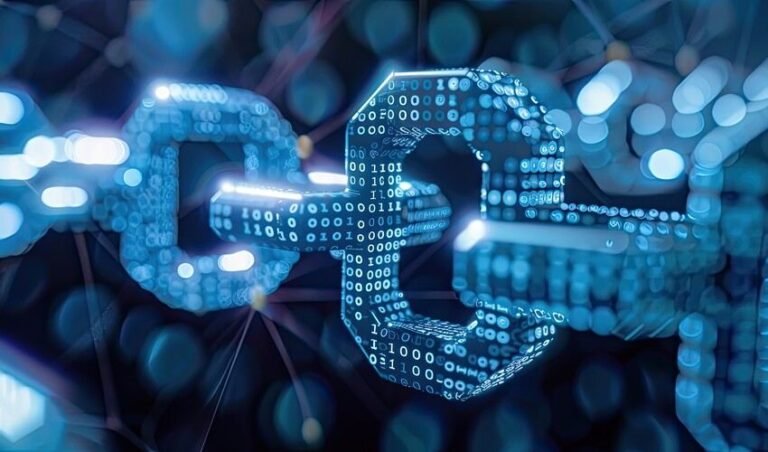Blockchain tech has really come a long way, moving from a somewhat obscure idea to becoming a fundamental part of today’s digital breakthroughs. The fact that it offers decentralization, transparency, and things can’t be easily changed (immutability) is why it’s catching on in all sorts of fields – think finance, managing supply chains, healthcare, and even real estate. But here’s the catch: even though blockchain is built to be strong, it’s not completely invulnerable to security issues. As more valuable assets and sensitive information get moved onto these blockchain-based platforms, making sure they’re secure (through testing) has become a really important step when building and launching them.
Introduction
Why Testing Blockchain Security is So Important?
The way blockchain systems work is kind of unique – they operate in what’s called a “trustless” environment. This means that instead of relying on central middlemen, everyone participating has to trust the network itself to be honest. Because of this, even just one little security weakness – it could be in the core blockchain rules (the protocol), the code for smart contracts, or the other tech that supports it – can cause some major problems. We’re talking about things like assets being stolen, services getting knocked out, and serious damage to reputations.
Security testing makes sure any weaknesses are found and fixed before they can be used against the system by attackers. It also helps organizations meet legal standards and gain the trust of those involved by showing that the system has been thoroughly checked for security.
Common Threats to Blockchain Systems
While blockchain’s encryption makes it tough to crack in some ways, the whole system around it opens up new ways for things to go wrong. Some typical problems are:
- Smart Contract Weak Spots: Mistakes in the code that runs on the blockchain, like certain types of bugs (e.g., reentrancy attacks, integer overflows, or variables not set up properly), can let attackers take assets without permission or mess with the contract itself.
- Hacking the Consensus: In a “51% attack,” if one group gets control of most of the network’s computing power or stake, they could potentially spend money twice or block certain transactions from going through.
- Tricking People (Phishing & Social Engineering): Since people make mistakes, this is still a big risk. Attackers often trick regular users or even administrators into giving away their login details or making harmful transactions.
- Fake Identities: Attackers might create lots of fake accounts to mess with how the network agrees on things (consensus) or to sway decisions in the project’s governance.
- Attacks on the Network Itself: Things like overwhelming the network (DoS attacks), messing with how data travels (routing manipulation), or isolating certain parts of the network (eclipse attacks) can target the way computers communicate with each other.
Key Components of Blockchain Security Testing
When it comes to keeping blockchain systems safe, security testing uses a mix of approaches to check for weaknesses throughout the system. Here’s a closer look at some key methods:
Smart Contract Auditing
Smart contracts are usually set in stone after they’re live, so any flaws can have lasting effects. Audits mix manual code checks, automated scans, and fuzz testing to catch things like logic mistakes, security gaps, and whether contracts follow standards such as ERC-20 or ERC-721.
Penetration Testing
This method mimics real-world attacks on blockchain nodes, wallets, and APIs. It’s great for uncovering potential weak spots in things like login security, data checks, and how the network is set up.
Consensus Algorithm Testing
Testing how consensus protocols work makes sure they can stand up to manipulation, network splits (forks), or slowdowns. This might involve recreating scenarios like a 51% attack or “selfish mining.”
Network Security Assessment
Looking closely at how nodes talk to each other, how firewalls are configured, and the encryption used helps lower the risk of attacks that come through the network.
Cryptographic Validation
Making sure the cryptography is solid—like encryption, hashing, and digital signatures—ensures these tools are strong and can fend off known attacks.
Load and Stress Testing
Testing under peak loads guarantees system performance and avoids bottlenecks that could be exploited during high-traffic events, as blockchain networks must manage fluctuating transaction volumes.
Best Practices for Blockchain Security Testing
• Implement a Secure Development Lifecycle (SDLC): Rather than considering security testing and reviews as an afterthought, include them at every stage of development.
• Employ Automated Tools and Manual Review: Although automated tools are capable of rapidly identifying common problems, human knowledge is crucial for identifying more complicated vulnerabilities.
• Involve Third-Party Auditors: Unbiased security professionals contribute their specialized knowledge and objective evaluation to the review process.
• Update and patch frequently: To handle new threats, ongoing monitoring and timely updates are required even after deployment.
• Emulate Real-World Attacks: Proactive vulnerability identification is encouraged by bug bounty programs and red team exercises.
The Road Ahead
Attackers are likely to create increasingly complex techniques to take advantage of vulnerabilities as blockchain adoption increases. To guarantee system resilience, security testing must adapt by utilizing formal verification methods, AI-driven vulnerability detection, and sophisticated threat modeling.
In the realm of blockchain, trust is established through strict security assurance in addition to cryptography. Organizations can safeguard assets, preserve user trust, and guarantee that the decentralized future is as safe as it is inventive by investing in thorough blockchain security testing.
Frequently Asked Questions (FAQs)
What is meant by blockchain security testing?
Blockchain tech has really come a long way, moving from a somewhat obscure idea to becoming a fundamental part of today’s digital breakthroughs. The fact that it offers decentralization, transparency, and things can’t be easily changed (immutability) is why it’s catching on in all sorts of fields – think finance, managing supply chains, healthcare, and even real estate. But here’s the catch: even though blockchain is built to be strong, it’s not completely invulnerable to security issues. As more valuable assets and sensitive information get moved onto these blockchain-based platforms, making sure they’re secure (through testing) has become a really important step when building and launching them.
Why Testing Blockchain Security is So Important?
The way blockchain systems work is kind of unique – they operate in what’s called a “trustless” environment. This means that instead of relying on central middlemen, everyone participating has to trust the network itself to be honest. Because of this, even just one little security weakness – it could be in the core blockchain rules (the protocol), the code for smart contracts, or the other tech that supports it – can cause some major problems. We’re talking about things like assets being stolen, services getting knocked out, and serious damage to reputations.






